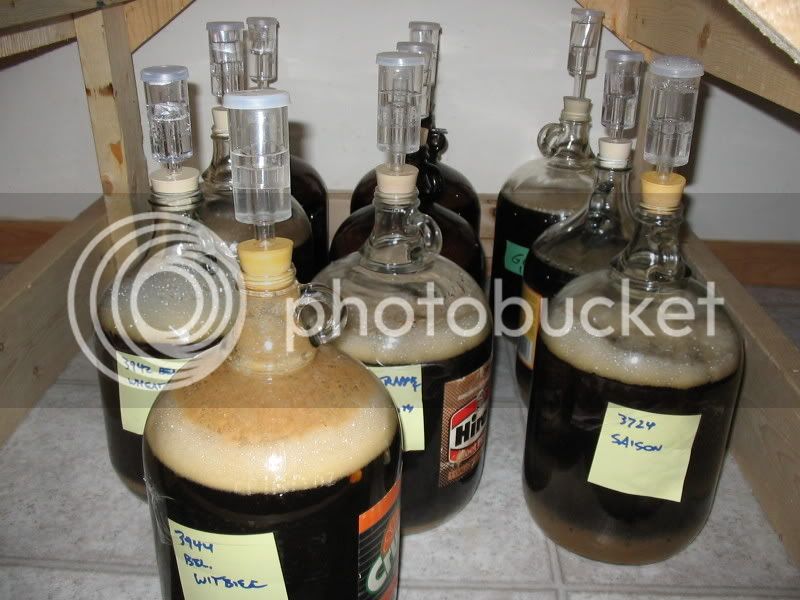newguy
To err is human, to arrr is pirate
- Joined
- 8/11/06
- Messages
- 2,225
- Reaction score
- 35
Thought this would be of general interest.
A member of my brew club suggested that the two of us get together and brew 10 gallons (about 40 litres) of beer, and then split it 10 ways. Each one gallon 'batch' would get a different Wyeast Belgian strain of yeast. We are supposed to roll out this brew for our club's year end wrap-up party/competition/conference at the beginning of June. This is meant as a learning exercise for all of our club members.
By the way, if anyone is interested in entering our competition, we'd love to get some entries from Australia. Details can be found here: EHG homepage.
I agreed, and we ordered the yeast. Then my partner disappeared so today I ended up brewing the whole thing myself. Figures, eh? <_<
The yeasts we're trying are:
1214 Belgian Abbey
1388 Belgian Strong
1762 Belgian Abbey II
3278 Belgian Lambic
3463 Forbidden Fruit
3522 Belgian Ardennes
3724 Belgian Saison
3787 Trappist High Gravity
3942 Belgian Wheat
3944 Belgian Witbier
It was suggested that we brew a Dubbel for this, and I happened to win a gold medal for a Dubbel a year ago, so I copied the recipe. Almost. I left out the candi sugar, but the grist was the same. Something else was different. I don't have any idea what I did today, but my anticipated efficiency should have been 80%. I usually get 85% time & time again, but when I brew higher gravity beers, my efficiency always suffers a bit. Today I got 95% efficiency for some reason. I was shooting for an OG of 1.064, but I hit 1.078. Oh well. I guess I'll call it a Belgian Dark Strong.
If you're interested, here are links to some pictures I took to commemorate the event.
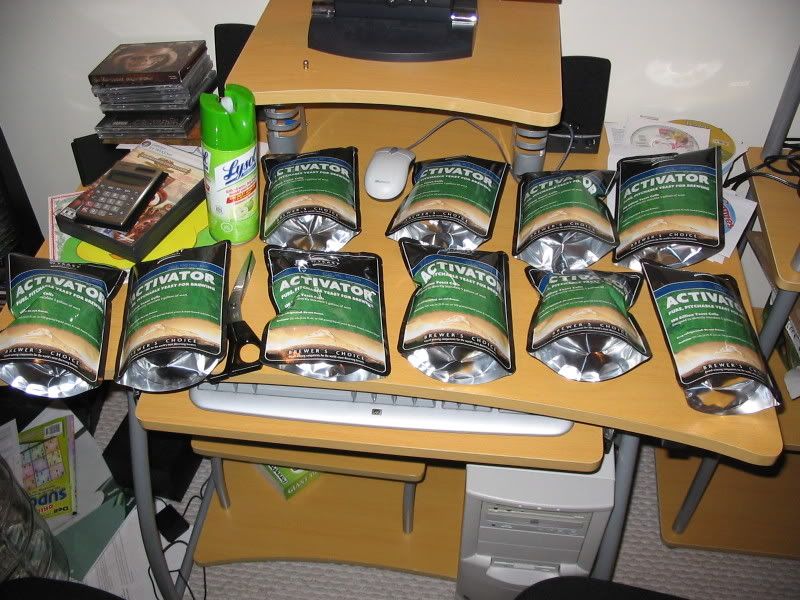
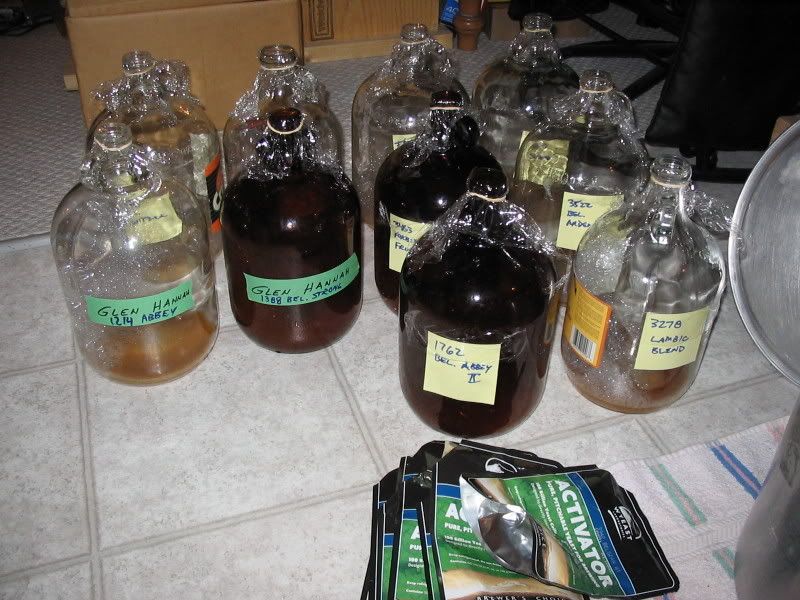
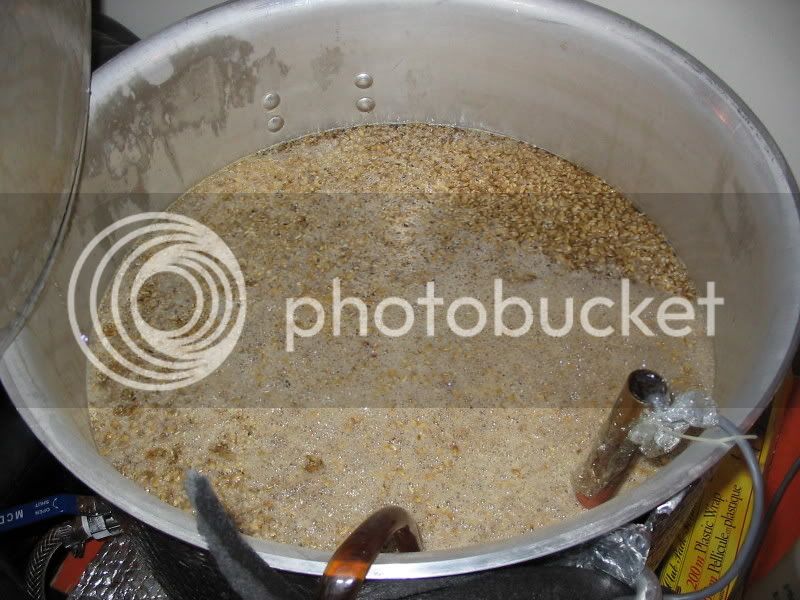
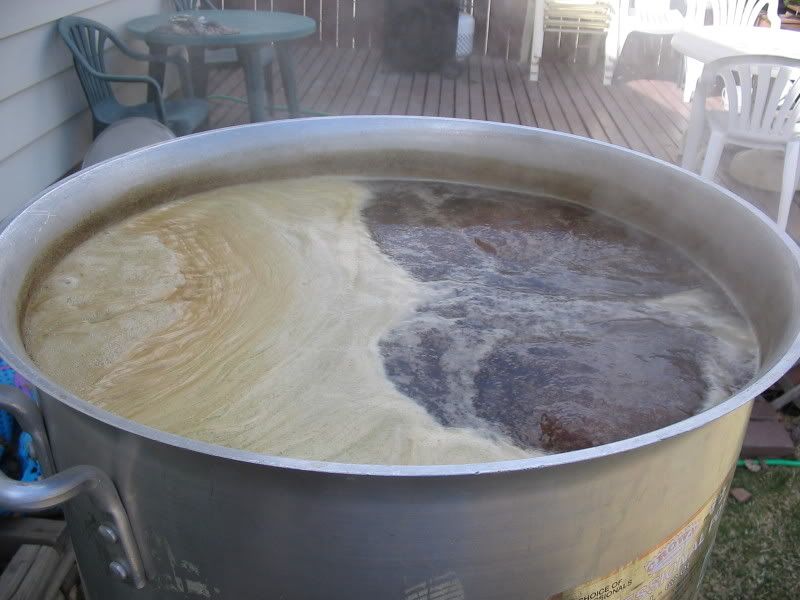
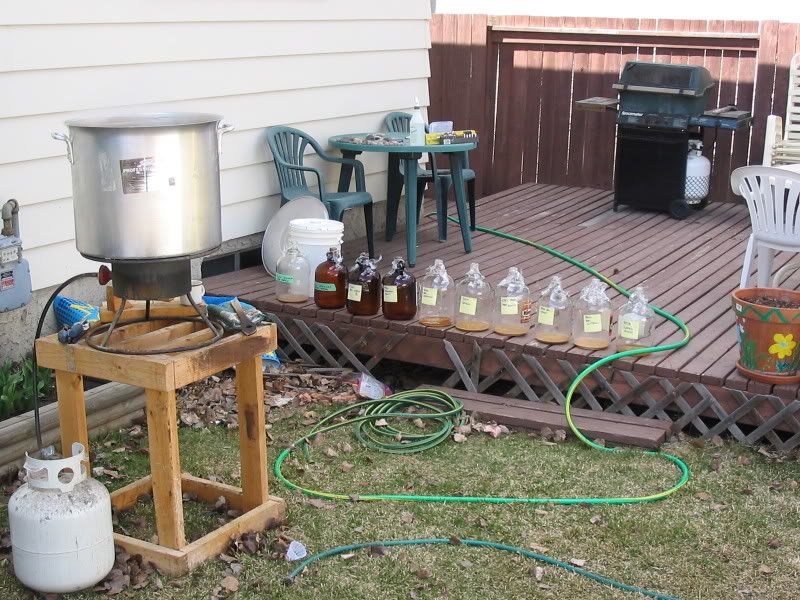
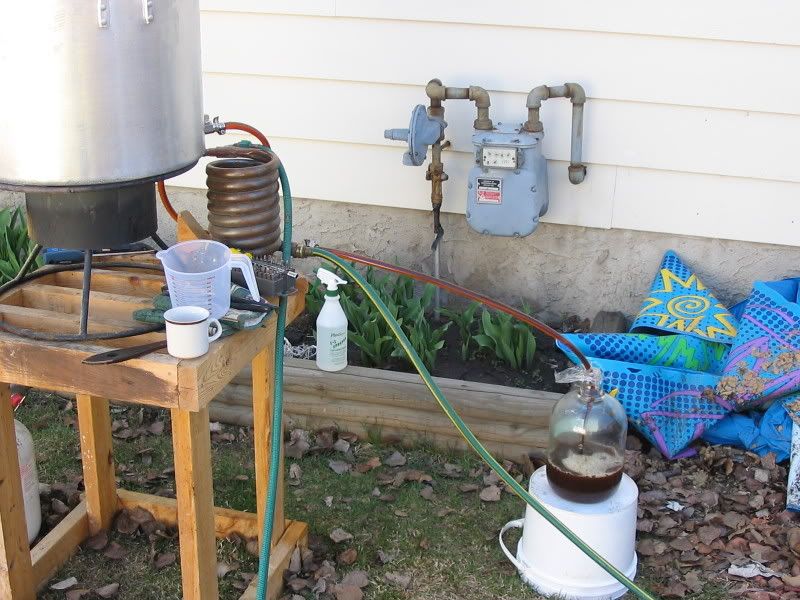
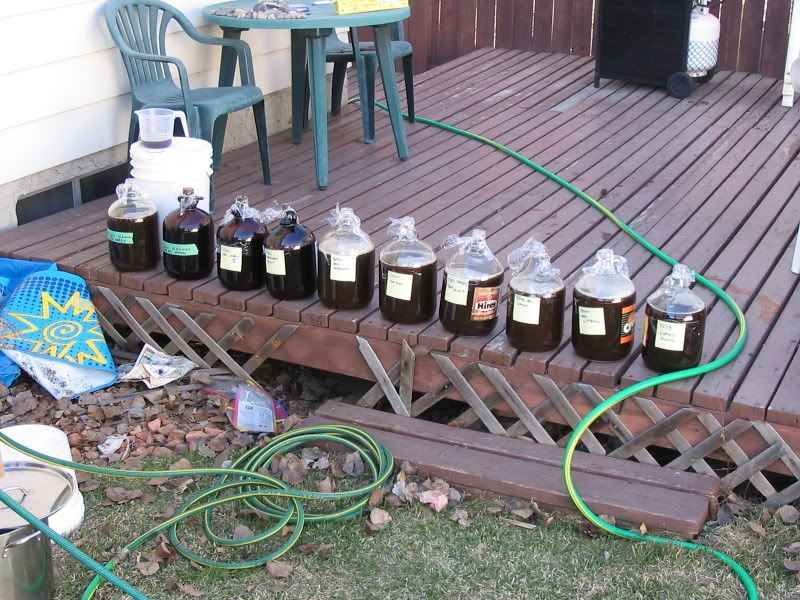
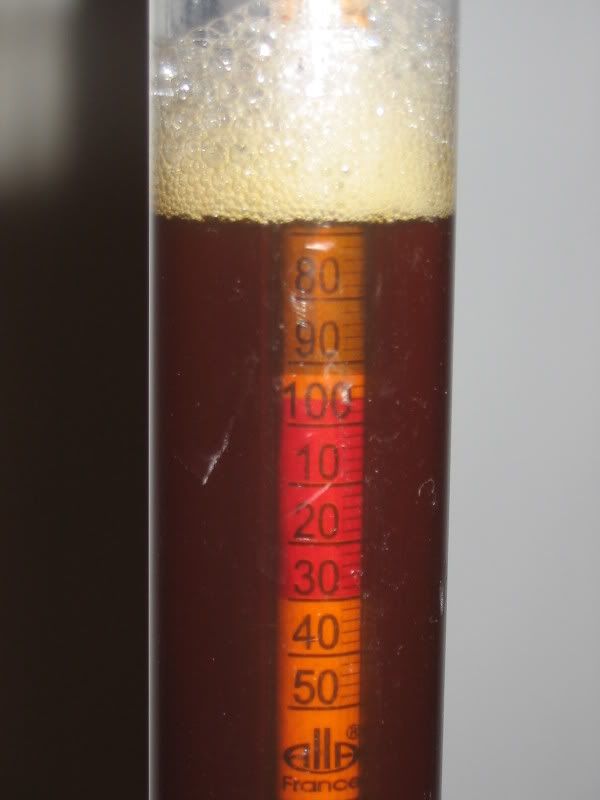
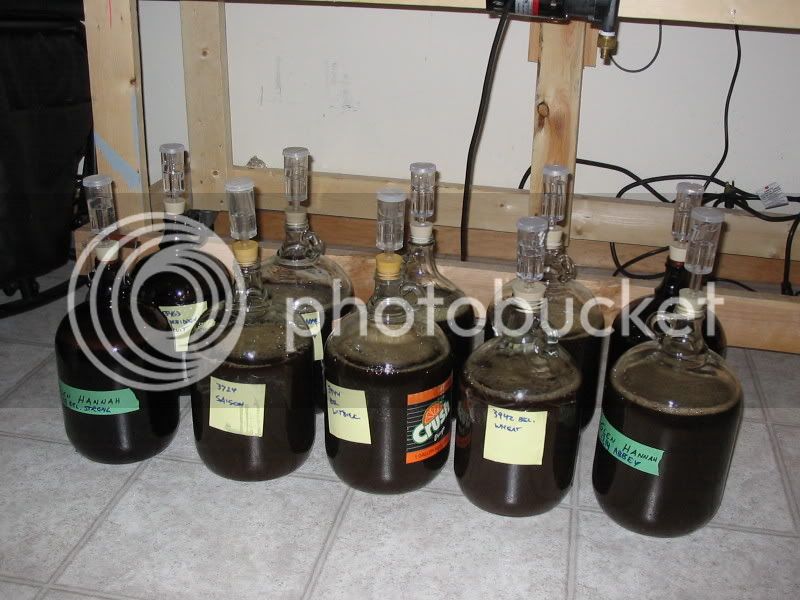
Here's the recipe for the beer itself:
6.47 kg 2-row
2.94 kg light munich
725g caramel 60
445g dark crystal
408g special B
118g chocolate malt
Mashed @ 67C for 60 minutes, then heated up to 75C. Sparged with 75C water until approx 55 - 57 litres collected.
OG 1.078. Like I said earlier, for some stupid reason my efficiency ended up being 95% instead of the 80% it always is for heavier beers.
Boiled for 90 minutes, with one hop addition for entire 90 minute boil duration: 2.5 oz (71g) Bramling Cross (5.0%) for 17.6 IBU. Yeast pitched @ 17C.
A member of my brew club suggested that the two of us get together and brew 10 gallons (about 40 litres) of beer, and then split it 10 ways. Each one gallon 'batch' would get a different Wyeast Belgian strain of yeast. We are supposed to roll out this brew for our club's year end wrap-up party/competition/conference at the beginning of June. This is meant as a learning exercise for all of our club members.
By the way, if anyone is interested in entering our competition, we'd love to get some entries from Australia. Details can be found here: EHG homepage.
I agreed, and we ordered the yeast. Then my partner disappeared so today I ended up brewing the whole thing myself. Figures, eh? <_<
The yeasts we're trying are:
1214 Belgian Abbey
1388 Belgian Strong
1762 Belgian Abbey II
3278 Belgian Lambic
3463 Forbidden Fruit
3522 Belgian Ardennes
3724 Belgian Saison
3787 Trappist High Gravity
3942 Belgian Wheat
3944 Belgian Witbier
It was suggested that we brew a Dubbel for this, and I happened to win a gold medal for a Dubbel a year ago, so I copied the recipe. Almost. I left out the candi sugar, but the grist was the same. Something else was different. I don't have any idea what I did today, but my anticipated efficiency should have been 80%. I usually get 85% time & time again, but when I brew higher gravity beers, my efficiency always suffers a bit. Today I got 95% efficiency for some reason. I was shooting for an OG of 1.064, but I hit 1.078. Oh well. I guess I'll call it a Belgian Dark Strong.
If you're interested, here are links to some pictures I took to commemorate the event.









Here's the recipe for the beer itself:
6.47 kg 2-row
2.94 kg light munich
725g caramel 60
445g dark crystal
408g special B
118g chocolate malt
Mashed @ 67C for 60 minutes, then heated up to 75C. Sparged with 75C water until approx 55 - 57 litres collected.
OG 1.078. Like I said earlier, for some stupid reason my efficiency ended up being 95% instead of the 80% it always is for heavier beers.
Boiled for 90 minutes, with one hop addition for entire 90 minute boil duration: 2.5 oz (71g) Bramling Cross (5.0%) for 17.6 IBU. Yeast pitched @ 17C.





